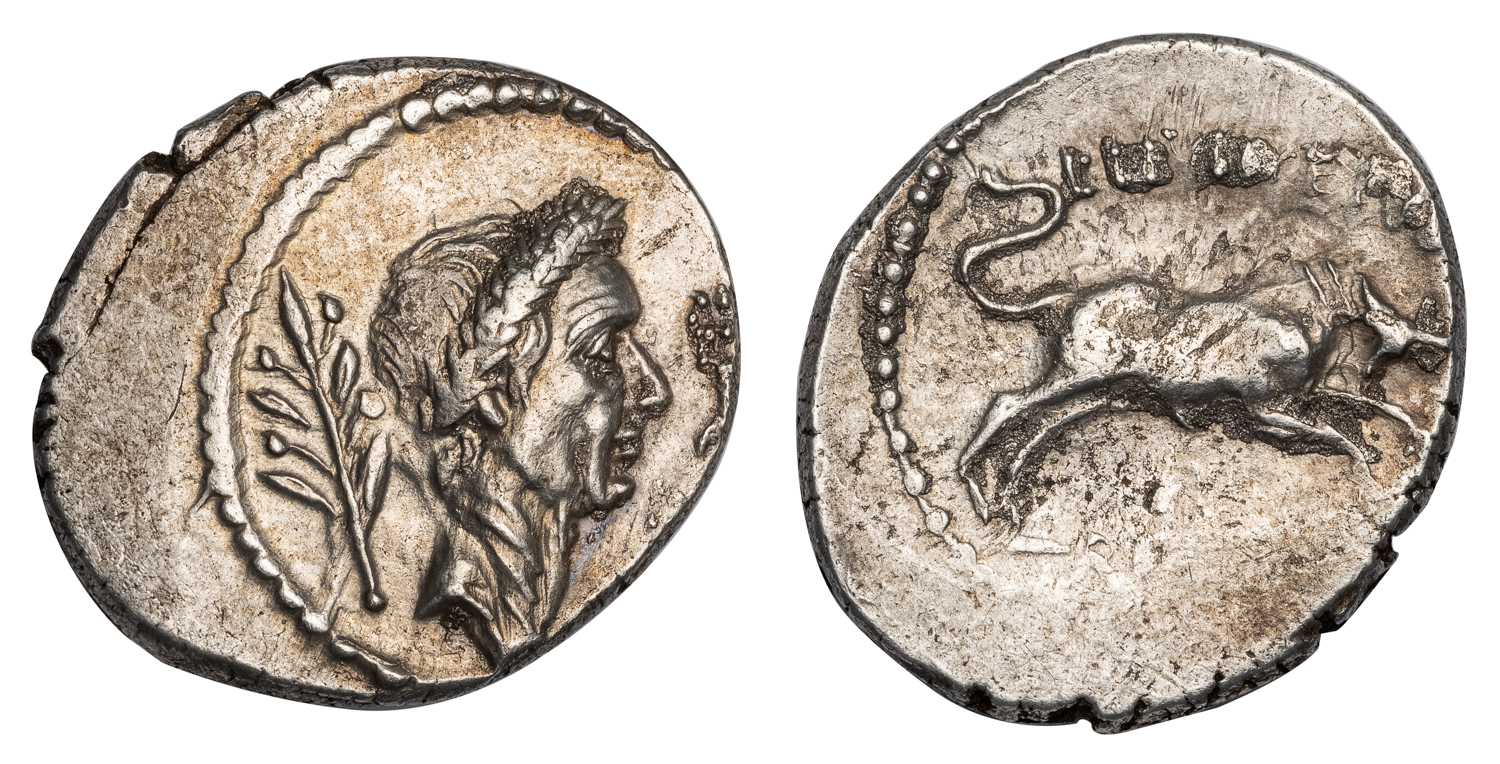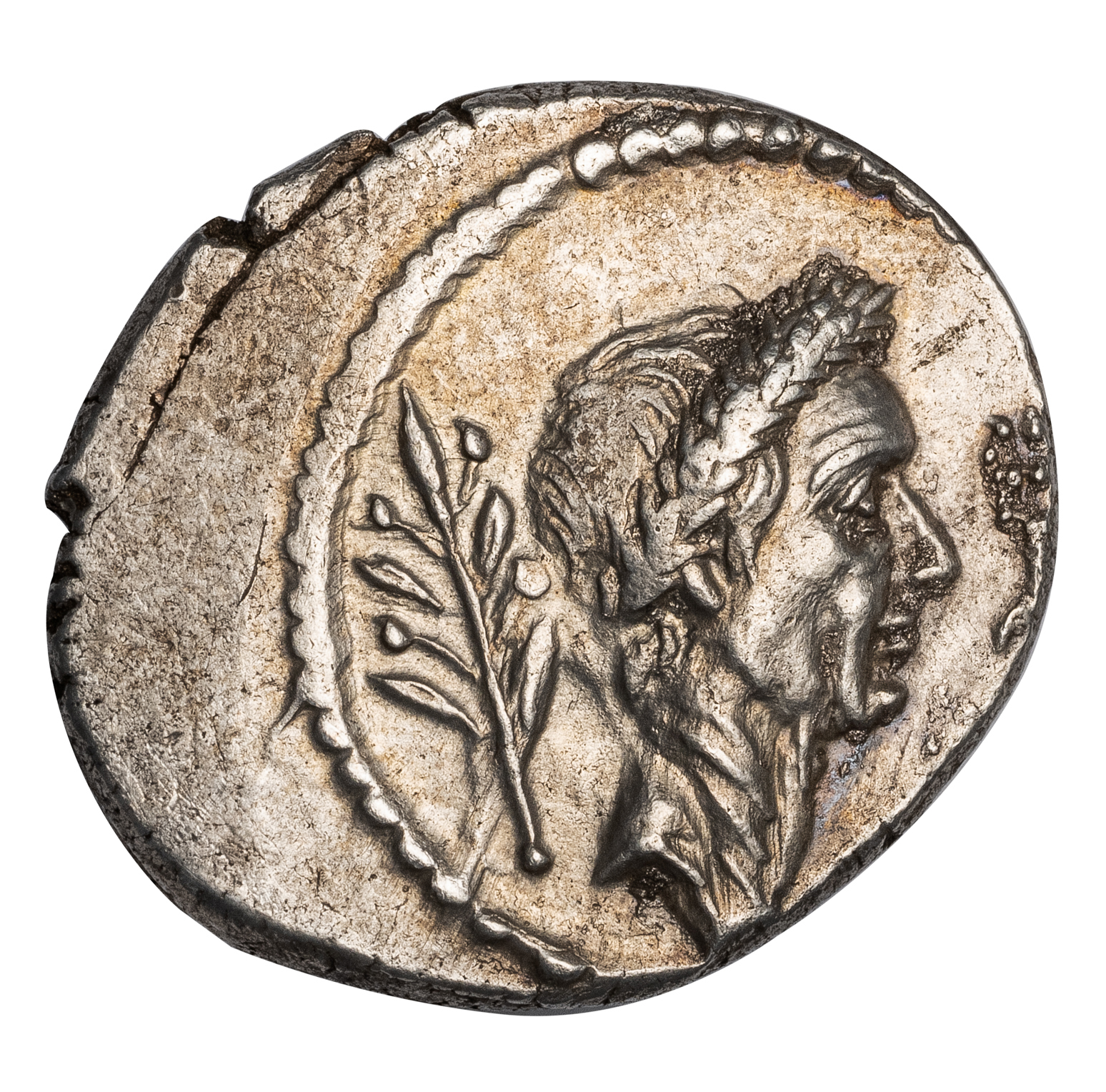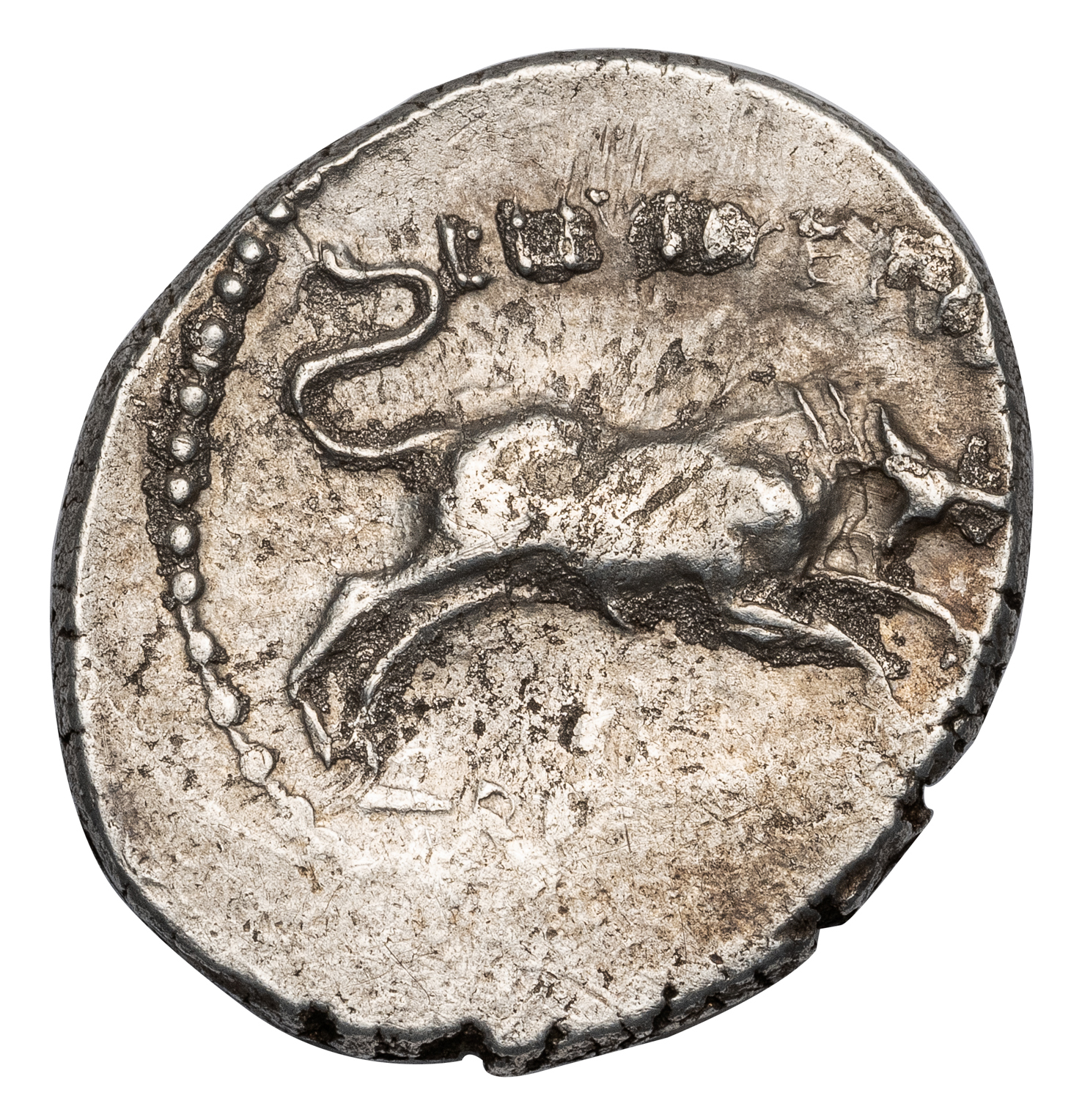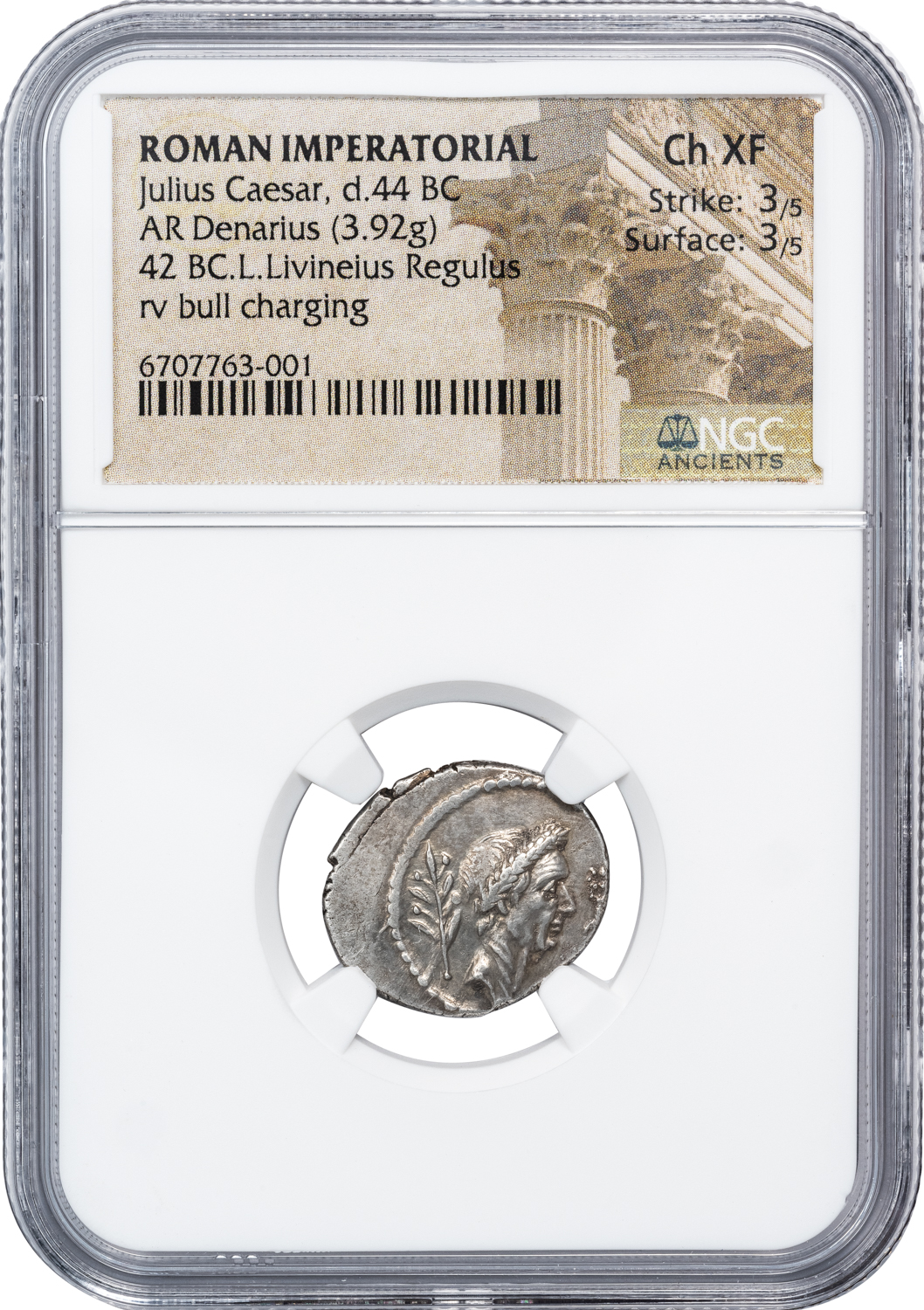JULIUS CAESAR SILVER DENARIUS – ISSUE OF LIVINEIUS REGULUS WITH BULL – CHOICE XF NGC GRADED ROMAN IMPERATORIAL COIN OF THE 12 CAESARS (Inv. 19231)
$6,800.00
19231. ROMAN IMPERATORIAL. JULIUS CAESAR, d. 44 BC.
Silver Denarius, 3.92 g, 19 mm. Posthumous issue struck by L. Livineius Regulus at Rome, 42 BC.
Obv. Laureate head of Caesar right, laurel branch to left, winged caduceus at right. Rev. L LIVINEI[VS] R[EGVLVS], bull charging right.
Crawford 494/24; Sydenham 1106.
Ex Vilmar FPL VII, Fall 2024, p. 36.
NGC graded CHOICE XF, Strike 3/5, Surface 3/5, the depiction of Julius Caesar showing accentuated aspects of “verism” (hyperrealism), a feature characteristic of late Republican portraiture.
The veristic portrait of Julius Caesar on this denarius, struck in 42 BC, two years after his murder, is perhaps based on the previous laureate portrait used while the Dictator still lived. The heavy folds of skin on the neck of the portrait give the illusion that Caesar was older than the 55 years he had lived before he was struck down by his assassins. The image of the dead dictator appears on the coinage in 42 BC to maintain public outrage against Brutus, Cassius and the rest of Caesar’s killers, as they and the Caesarean triumvirs, Octavian, Antony, and Lepidus armed for the final showdown that came at the Battle of Philippi in October 42 BC. The charging bull on the reverse is thought to refer to an incident that took place prior to Caesar’s victory over the Pompeians at the Battle of Thapsus (46 BC). According to Suetonius, before the battle a sacrificial bull broke loose and escaped, but Caesar ignored this ill omen and pressed on to win the day. The moneyer, L. Livineius Regulus is known to have been present as praetor with Caesar’s forces for the African campaign that came to an end at Thapus.




